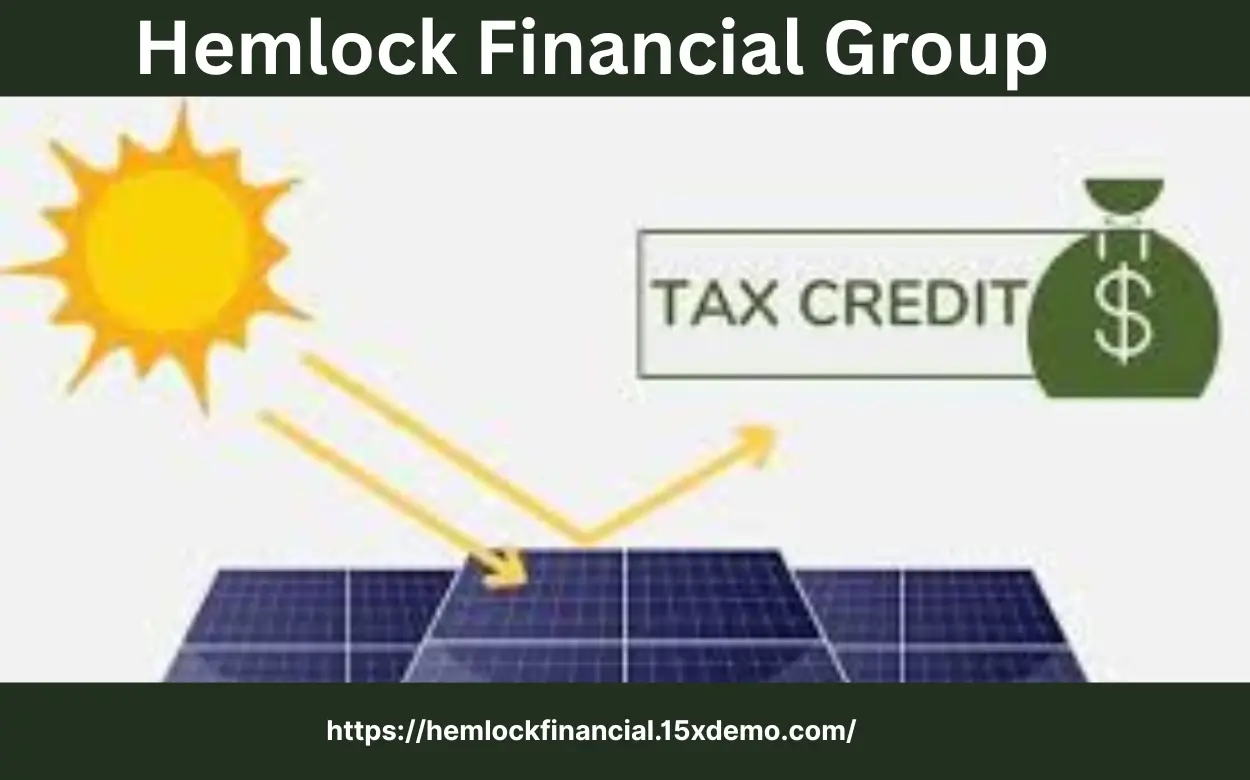As we look ahead to 2025, businesses have a golden opportunity to capitalize on solar energy tax credit and energy-efficient incentives. These programs offer financial benefits for companies investing in renewable energy solutions and eco-friendly upgrades. With the increasing focus on sustainability, understanding the various tax credits available can help businesses save money while reducing their carbon footprint. From energy-efficient windows to appliances and vehicles, there are numerous ways to take advantage of these incentives. In this guide, we’ll explore how your business can benefit from these tax credits and why now is the perfect time to consider these energy-saving investments. For more information on the federal tax credits available, visit the IRS website.
Understanding Solar Energy Tax Credits
Solar energy tax credits offer businesses significant financial incentives for adopting renewable energy solutions. This section explores the fundamentals of these credits, upcoming changes, and their impact on small and medium enterprises.
What Are Solar Energy Tax Credits?
Solar energy tax credits are financial incentives provided by the government to encourage the adoption of solar power systems. These credits allow businesses to deduct a portion of their solar installation costs from their tax liability.
The main goal is to make solar energy more accessible and affordable for companies of all sizes. By reducing the initial investment required, these credits help businesses transition to cleaner energy sources.
Solar tax credits typically cover a percentage of the total system cost, including equipment and installation. This can result in substantial savings, making solar power a more attractive option for many businesses.
Changes in 2025 Tax Credits
The solar energy tax credit landscape is set to evolve in 2025. These changes will impact how businesses can benefit from these incentives and plan their renewable energy investments.
One key change is the adjustment of credit percentages. The federal solar tax credit, also known as the Investment Tax Credit (ITC), will be modified. Businesses should stay informed about these updates to maximize their benefits.
Another important shift is the potential introduction of new qualifying criteria for solar installations. This may affect the types of systems and components eligible for tax credits in 2025 and beyond.
Benefits for Small and Medium Businesses
Small and medium businesses stand to gain significantly from solar energy tax credits. These incentives can help offset the initial costs of solar installation, making renewable energy more accessible.
By leveraging these credits, smaller companies can compete more effectively with larger corporations in terms of energy efficiency and sustainability. This can lead to improved brand image and customer loyalty.
Solar tax credits also offer long-term financial benefits. They can reduce operating costs through lower energy bills, providing a steady return on investment over time. For more information on how businesses can benefit from solar tax credits, visit EnergySage.
Federal Energy Efficiency Incentives
The federal government offers various incentives to promote energy efficiency across different sectors. This section covers key federal programs designed to encourage businesses to adopt energy-efficient practices and technologies.
Federal Energy Efficiency Tax Credit
The federal energy efficiency tax credit is a powerful tool for businesses looking to reduce their energy consumption and carbon footprint. This credit rewards companies for implementing energy-efficient solutions in their operations.
Qualifying improvements can include upgrades to heating, cooling, and ventilation systems, as well as enhancements to building insulation. The credit amount is typically based on the cost of the improvements and their expected energy savings.
To claim this credit, businesses must meet specific criteria set by the Internal Revenue Service (IRS). It’s crucial to maintain proper documentation of all energy efficiency upgrades and their associated costs.
Energy Efficient Tax Credit for Appliances
Energy-efficient appliances can significantly reduce a business’s energy consumption. The tax credit for these appliances incentivizes companies to choose more efficient options when upgrading their equipment.
Eligible appliances often include refrigerators, dishwashers, and washing machines that meet specific energy efficiency standards. The credit amount varies depending on the type of appliance and its energy-saving capabilities.
Businesses should look for appliances with ENERGY STAR certification, as these are typically eligible for tax credits. It’s important to keep records of purchases and energy efficiency ratings when claiming these credits.
Energy Efficient Vehicles Tax Credit
The energy-efficient vehicles tax credit encourages businesses to adopt cleaner transportation options. This credit applies to various types of eco-friendly vehicles, including electric and hybrid models.
The credit amount depends on factors such as the vehicle’s battery capacity and gross vehicle weight rating. Businesses can benefit from this credit when purchasing fleet vehicles or company cars.
To maximize the benefits, companies should research eligible vehicle models and plan their purchases accordingly. It’s also important to note that credit amounts may phase out as manufacturers reach certain sales thresholds.
Home Improvement and Appliance Tax Credits
While primarily aimed at homeowners, these credits can also benefit businesses involved in property management or those with commercial properties. This section explores tax incentives for energy-efficient home improvements and appliances.
Energy Efficient Home Improvement Tax Credit
The energy efficient home improvement tax credit rewards property owners for making energy-saving upgrades. This can be particularly beneficial for businesses managing rental properties or maintaining commercial buildings.
Eligible improvements often include insulation upgrades, energy-efficient roofing, and high-efficiency heating and cooling systems. The credit amount is typically a percentage of the cost of these improvements, up to a specified limit.
To claim this credit, businesses must ensure that the improvements meet the required energy efficiency standards. It’s crucial to keep detailed records of all upgrades and their associated costs.
Tax Credit for Energy Efficient Windows
Energy-efficient windows can significantly reduce heating and cooling costs. The tax credit for these windows encourages businesses to invest in this energy-saving upgrade.
To qualify, windows must meet specific energy performance ratings set by the Environmental Protection Agency (EPA). The credit amount is usually a percentage of the cost of the windows, up to a certain limit.
When claiming this credit, businesses should obtain certification statements from the window manufacturer. These documents confirm that the products meet the required energy efficiency criteria.
Energy Efficient Doors Tax Credit
Similar to windows, energy-efficient doors can help reduce energy loss and improve a building’s overall efficiency. The tax credit for these doors provides an incentive for businesses to upgrade their entrances.
Eligible doors must meet specific U-factor and Solar Heat Gain Coefficient (SHGC) requirements. The credit typically covers a percentage of the door cost, subject to certain limitations.
To claim this credit, businesses should keep records of door purchases, including manufacturer certifications of energy efficiency. It’s also important to ensure proper installation to maximize energy savings.
Planning for 2025 Incentives
As we approach 2025, businesses should start planning to take full advantage of upcoming energy efficiency incentives. This section provides guidance on preparing for and maximizing these tax credits.
Preparing Your Business for Tax Credits
Preparing your business for 2025 tax credits involves several key steps. First, conduct an energy audit to identify areas where your company can improve efficiency.
Next, research upcoming changes to tax credit programs and align your improvement plans accordingly. This may involve consulting with energy efficiency experts or tax professionals.
Finally, create a budget and timeline for implementing energy-efficient upgrades. Remember to factor in both the upfront costs and the potential long-term savings and tax benefits.
Maximizing Energy Efficient Tax Credits
To maximize energy efficient tax credits, businesses should take a strategic approach. Start by prioritizing improvements that offer the highest energy savings and tax credit potential.
Consider bundling multiple energy-efficient upgrades to reach higher credit thresholds. For example, combining window replacements with insulation upgrades could lead to more substantial tax benefits.
Stay informed about credit caps and limitations to ensure you’re not exceeding maximum allowable amounts. It’s also crucial to maintain meticulous records of all energy efficiency improvements and related expenses.
Hemlock Financial Consultation Benefits
Hemlock Financial offers expert consultation services to help businesses navigate the complex landscape of energy efficiency tax credits. Our team of financial advisors can provide tailored guidance for your specific situation.
We can assist in developing a comprehensive strategy to maximize your tax benefits while improving your business’s energy efficiency. This includes analyzing potential improvements, estimating tax savings, and helping with credit application processes.
By partnering with Hemlock Financial, you can ensure that your business is well-positioned to take full advantage of 2025 energy efficiency incentives. Learn more about how we can help your business thrive in an energy-efficient future.
Investing in a Greener Future
Investing in energy efficiency is not just about immediate tax benefits; it’s a long-term strategy for business success and environmental stewardship. This section explores the broader impacts of these investments.
Long-term Savings with Energy Efficiency
Energy efficiency investments can lead to significant long-term savings for businesses. These savings extend beyond just reduced energy bills and tax credits.
Efficient equipment often has a longer lifespan and requires less maintenance, reducing replacement and repair costs over time. This can lead to improved cash flow and more predictable operating expenses.
Moreover, as energy prices continue to rise, businesses with energy-efficient operations will be better positioned to maintain their profit margins and competitiveness in the market.
Environmental Impact of Energy Efficient Investments
The environmental benefits of energy-efficient investments are substantial. By reducing energy consumption, businesses can significantly lower their carbon footprint and contribute to global sustainability efforts.
These investments can also enhance a company’s reputation, appealing to environmentally conscious consumers and potentially opening up new market opportunities. Many customers now prefer to support businesses that demonstrate a commitment to sustainability.
Furthermore, energy-efficient practices can help businesses comply with increasingly stringent environmental regulations, potentially avoiding future penalties or restrictions.
Future Trends in Energy Efficiency Incentives
The landscape of energy efficiency incentives is likely to evolve beyond 2025. We can expect to see a continued focus on renewable energy sources and more advanced energy-saving technologies.
There may be new incentives for emerging technologies such as energy storage systems or smart building management solutions. Businesses that stay ahead of these trends can position themselves to benefit from future incentive programs.
As climate change concerns grow, governments may introduce more aggressive incentives to accelerate the transition to a low-carbon economy. This could present even greater opportunities for businesses to benefit from energy efficiency investments in the future.



